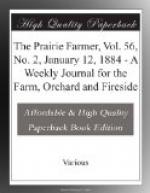Kepler held that the Star of Bethlehem was simply a conjunction of the planets. Astronomy, which, more fortunate than history, can bring unimpeachable witnesses to its record of past events, assures us that there was a remarkable conjunction, or rather three conjunctions of the planets Jupiter and Saturn, in the year of Rome 747, or seven years before the Christian era. It is now generally admitted that Christ was probably born at least four years before the date fixed upon as the first “year of our Lord,” and remembering how much uncertainty hangs about this date we might consider ourselves fully justified in placing it, as Kepler did, in the year 7 B.C. This being granted, let us see how the occurrence of the conjunctions in this year explains the miracle of the “Star.”
In the first place, note that the Magi, or Wise Men, of the East (presumably the country of Chaldea) were the first to call attention to the star as indicating the birth of the “King of the Jews.” The Chaldeans were devoted to astrology, and it is only reasonable to infer that whatever remarkable appearance they saw in the sky, they would endeavor to explain it by their astrological laws. On the 29th of May, 7 B.C., a conjunction of Jupiter and Saturn occurred, in the 20th degree of the constellation Pisces, close to the first point of Aries; on the 29th of September of the same year, another conjunction of these planets took place, in the 16th degree of Pisces; and on the 5th of December, a third, in the 15th degree of the same sign. (These are not conjectures or inferences, but known astronomical facts.) If we suppose that the Magi, intent on their study of the heavens, saw the first of these conjunctions, they actually saw it in the East, for on May 29, it would rise three and one half hours before sunrise. It is not necessary to suppose that the planets approached near enough to each other to appear as one star, for they probably did not—it was their conjunctions that gave their astrological significance. It plainly indicated to these observers that some important event was impending, and what could be more important than the birth of a great man? But where was this one to appear? The sign Pisces was the most significant one for the Jews, for according to astrological legend, in the year 2865 A.M. a conjunction of Jupiter and Saturn in this sign had heralded the birth of Moses; the proximity to Aries indicated that the hero foretold was of kingly lineage; the Jewish expectation of a great king had become a well-known story in Chaldea during the captivity, ergo, the inference was prompt and sure, this conjunction indicated the birth of the expected King of the Jews. That they might be among the first to do honor to so great a personage as they believed this king to be, the wise men soon set out for Judea. The journey probably took them five months or more. On their way they witnessed the second conjunction, which no doubt only strengthened their faith. If they performed the journey from Jerusalem to Bethlehem at the time of the third conjunction, December 5, in the evening, as the narration implies, the stars would be some distance east of the meridian, and would seem to move from southeast to southwest, or towards Bethlehem. Their standing over the house we may regard as an additional statement that crept into the narration probably through its repetitions.




